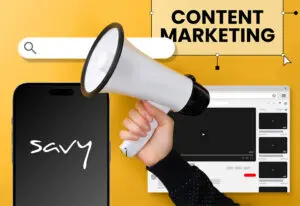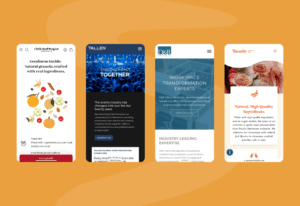
What is Programmatic Advertising and Native Advertising?
Pop-ups and pre-rolls are unwelcome interruptions, where native advertising — when done right — is a welcomed piece of time-worthy content.
The way we advertise is constantly changing. With consumers completely saturated with current advertising messages, it’s no wonder that ad blocking software is on the rise. So, how do you get to your consumer without continually interrupting them? Programmatic and native advertising.
Content marketing was designed to be the cure of interruption marketing, and native advertising takes it one step further. Native advertising allows your content to co-exist in the same format as other content. It’s a strategy to get your best content in front of your audience and one that’s participatory, not interruptive. Native ads are a type of paid content that fit the design and function of the current user experience on the site or app in which the native ad lives.
Good Native Advertising
Since native advertising is a form of camouflaged ads, there’s a right and wrong way to create the content. Good native advertising belongs, is valuable, and makes sense where its placed. These ads are more contextual than other forms of digital advertising. Instead of appearing off the side or across the top of the page — such as with display and banner ads — they mimic the look and feel of the page or placement to appear as more organic. This is important because you want your reader to continue to trust both the editorial and paid content. When you have good native advertising, it sits naturally within the platform, and it engages readers.
“Consumers interact with native ads 20% to 60% more than they do with standard banner ads.”
We consume content from the moment we wake up to the moment we go to sleep. In fact, the average US adult spends half a day — 12 hours and 1 minute — looking at media. So, with a plethora of content in a fast-paced world, consumers have learned to ignore ads and download blocking software. Sine, native advertising is specifically not look like an ad, it makes it harder to ignore.
Native Advertising and Programmatic Advertising
Native advertising is performing well with consumers, and so is programmatic advertising. Agencies use a DSP or demand side platform to decide which impressions to buy and how much to spend, while publishers use an SSP or supply side platform to sell ad space to brands. Programmatic advertising is on the rise, and we think it’s because it’s relevant. Programmatic ad software allows ad algorithms to evolve based on audience behavior, which means ad campaigns can quickly adapt to change and get in front of the right people.
When you pair native advertising and programmatic buying, you’ll have a greater opportunity to reach specific audiences. Programmatic algorithms can also optimize your native ad campaigns, so you can create what your audience wants.
What’s Next?
Native ads live on search engines, publisher and retail sites, and social media platforms. The digital advertising market is expected to grow from $15 billion in 2019 to $80 billion by 2020, with native advertising at the forefront. When you pair native advertising and programmatic buying together, have engaging content with algorithms to drive you to the right consumer.
Consider native and programmatic advertising for your 2019 marketing dollars. As the data available increases and uniformity of measurement and analysis grow, there will be a more significant focus on real-time adjustments to native campaigns, which will drive engagement levels even higher.
Recent Posts
Trends, Tech, and Takeaways: Applying 2025’s Lessons to Your New Year Marketing Campaigns
2025 has been a year of bold shifts and rapid adaptation. Marketers faced new challenges, tested new tools, and learned fast. As the year closes, the smartest brands are already […]
Read MoreConnected Strategies for Consistent, Scalable Growth
Think about the last time you opened a new tab to complete a task and ended up juggling five tools, three logins, and a dozen message notifications. It’s the modern […]
Read MoreWhy Clients Call Us the Best Digital Marketing Agency in Bend, Oregon: Showcasing Our Impactful Work
We love helping brands surpass their competition—and their expectations. Clients often refer to us as the best digital marketing agency in Bend, Oregon, and it’s not a title we take […]
Read MoreFuture-Proof Your Brand With a Tailored Digital Ecosystem Strategy
The pace of digital change isn’t slowing down anytime soon. Businesses that rely on outdated tools, disconnected platforms, or piecemeal marketing efforts often find themselves stuck, unable to scale or […]
Read More



